Maurizio Faleni’s new work shines in the great hall of his Livorno studio, under the light of an early June morning that enhances the aluminum surfaces of his Living Works, living works, the most recent chapter in a research that has always questioned the roots of artistic expression, the reasons for color, the ways in which colors touch certain areas of our brains and psyches, the unknown, the supra-sensory.a research that has always questioned the roots of artistic expression, the reasons for color, the ways in which colors touch certain areas of our brain and psyche, the unknown, the supersensible. In the great hall of Villa Rodocanacchi, where for years Faleni has set up his studio, among the peeling walls of a fragment of nineteenth-century Livorno that has survived amidst the bites of building speculation and urban sprawl, the sunlight interprets, exalts, and decants the poetry of his new works. Works that, it must be said from the outset, sooner or later we hope will come out of the studio and meet an audience that will detect their strength, beauty, complexity, originality, and adherence to a path that Faleni, an artist to be counted among the most significant contemporary Italian abstractionists, has always seen as a form of exploration and, at the same time, of resistance.
If before the focus of Faleni’s research was color, now it is light. If before Faleni’s works were charged with a sacredness that manifested itself in a panic fusion to human beings and nature by means of color, now by means of light his works open to a new form of ecstasy, to a new form of evocation of mystery, of greatness, of that which exists beyond the sensible. Now, says the artist, it is no longer painting at the center of his work: it is us, at the center of his work. However, there is no break with the previous work: it is, if anything, the natural consequence. Aluminum, the material that dominates Faleni’s production, the printing plate, is treated with chemical processes that accentuate the natural opacity of the material but at the same time retain impressions of light and produce colored bands that animate the work, reveal themselves or hide themselves according to theangle from which they are viewed, and at the same time the work changes as the light conditions of the space that houses them change, as the position of the viewer changes, and as others pass by in the same room. It follows that Faleni’s Living Works are works that are impossible to photograph. They are living works: they elude the camera, they change their appearance, they do not intend to be bridled. It is as if by themselves, and without uttering a word, they intend to demonstrate that one is not given the faculty to see them, look at them, understand them, appreciate them unless one observes them live.
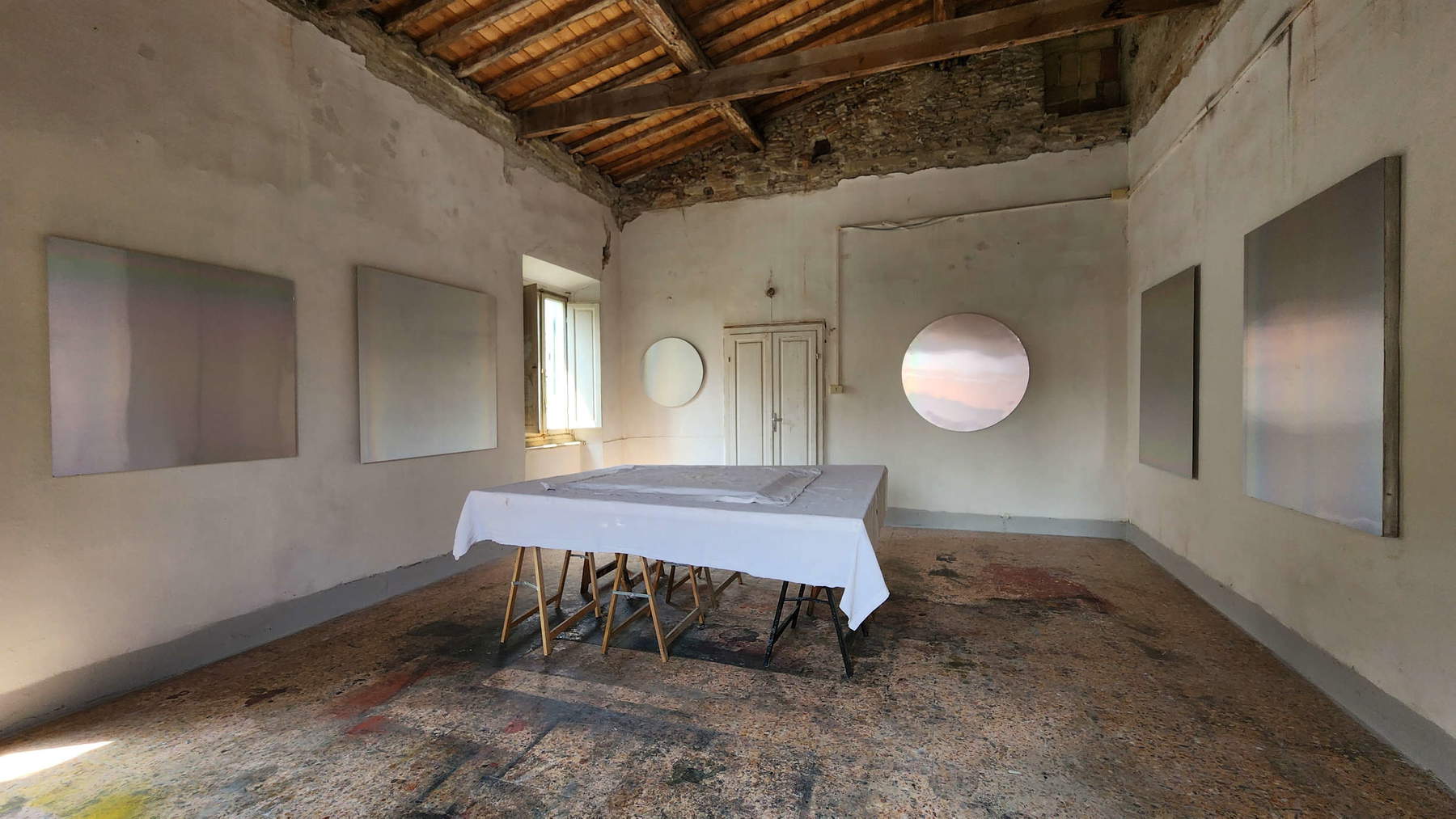
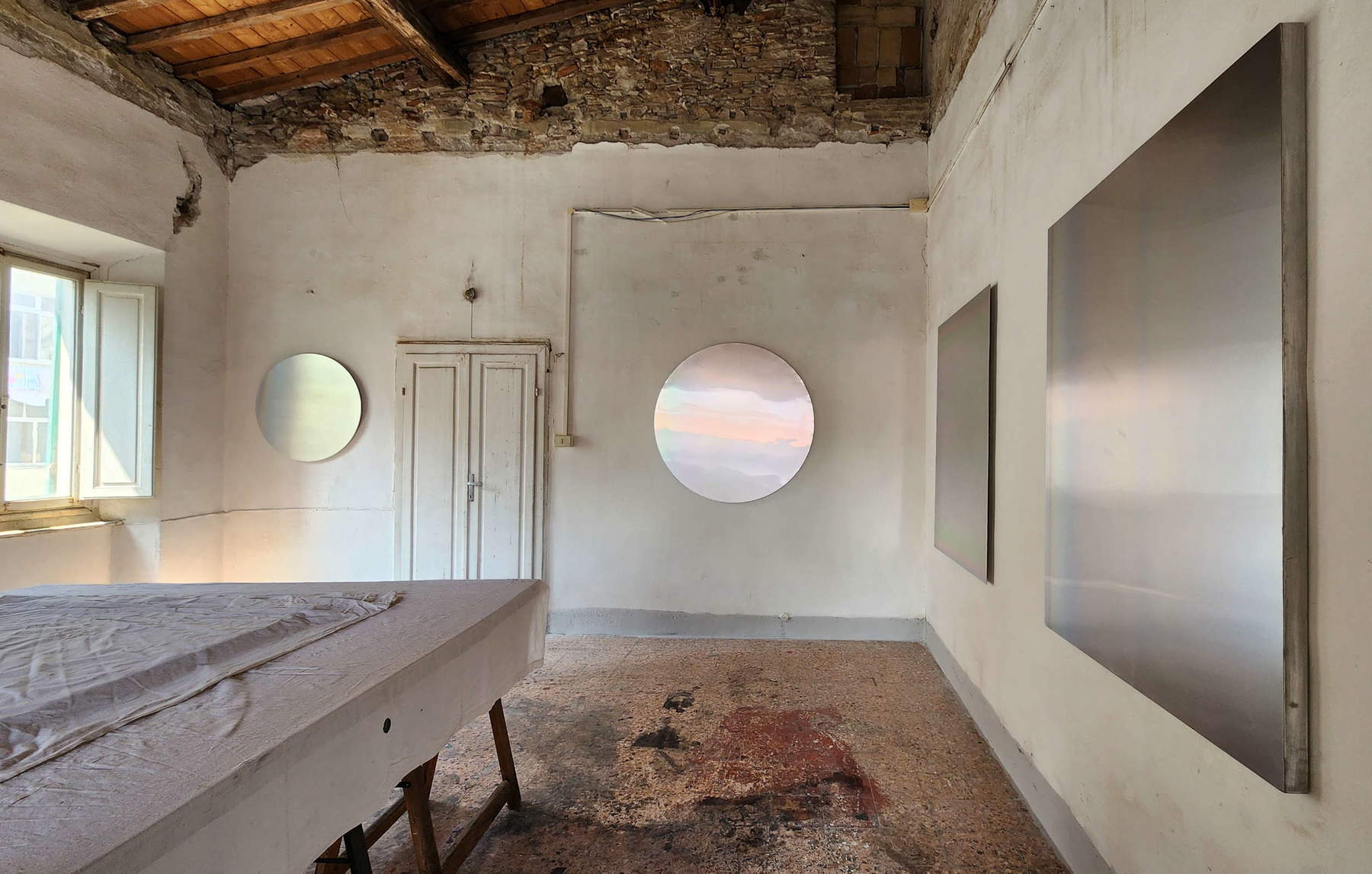
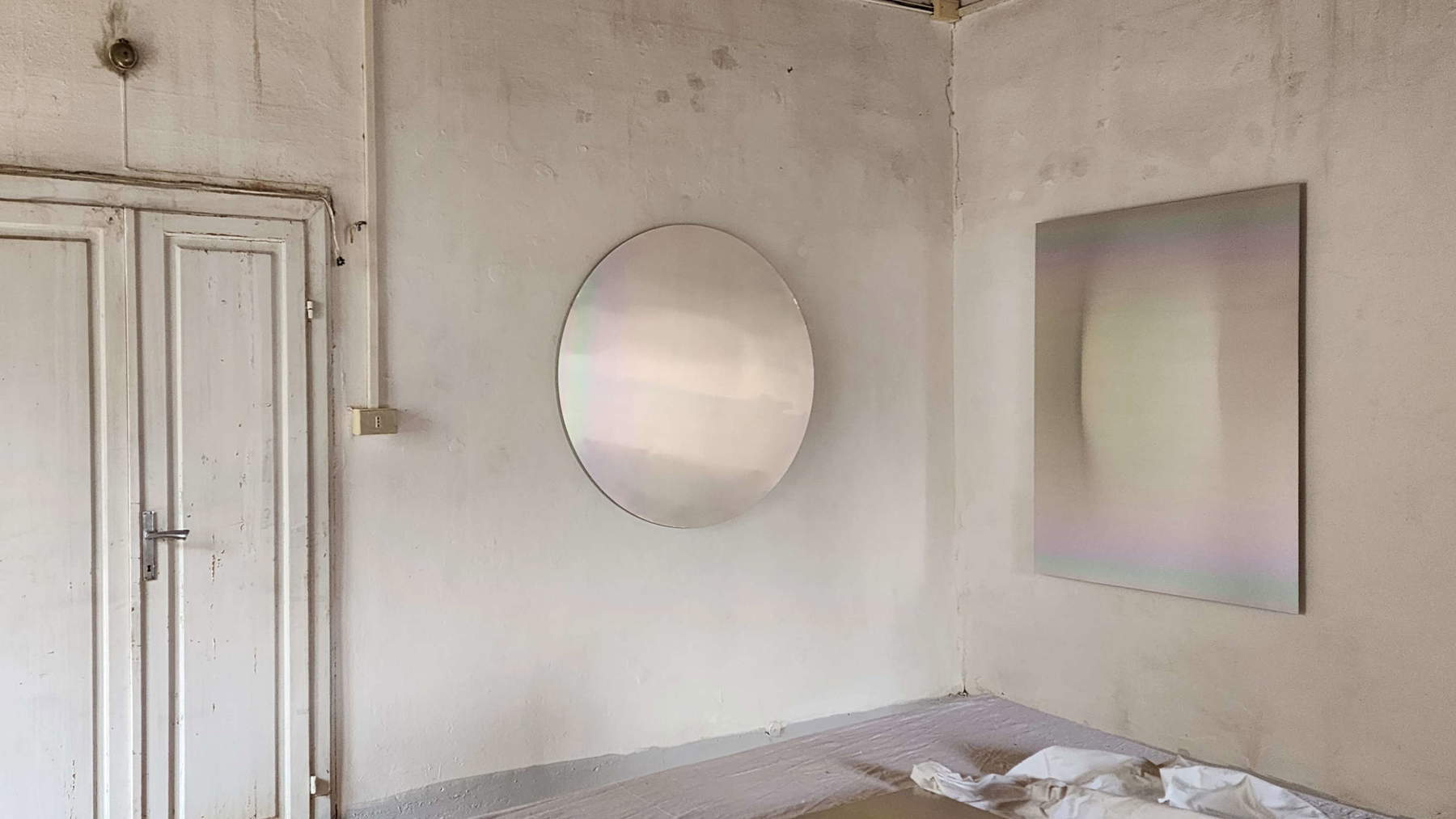


Maurizio Faleni makes no secret of the fact that the impracticality of capturing with the photographic medium is somehow part of the intentions from which this series of works on aluminum arose. He wrote this in a cyclostyled text that he hands me when I go to his studio to see the works, completed in May of this year. Romantic gesture, to hand over a cyclostyled sheet to someone who comes to see a new work of yours. But Maurizio Faleni is a romantic artist. Unconventional, determined, refractory to fashion, totally involved in his research. And the text he hands me is a kind of manifesto of his new work, it is the inauguration, by his own admission, of a new phase in his research. “In the age of surveillance and hyperconnection, reflective aluminum monochromes become a critical act of resistance. Deprived of color and paint, these pieces do not offer a visual narrative, but invite the viewer to confront their own image, rendered only in a blurry, imperfect way. They are surfaces that do not absorb, but send back fragments of reality, questioning the construction of identity and our relationship with our surroundings.”
It almost comes naturally to think of Pistoletto’s mirrors, from which, however, Faleni’s Living Works are separated by a sidereal distance. If the mirror-polished steels were an invitation to reflect on oneself, on the collective, on one’s role in society and in the world, as well as a dialogue between the work itself and the concrete reality that surrounds it, between the work and space, between oneself and the world, Faleni’s aluminum sheets cancel out the reflected image and call into question what Pistoletto wanted to bring out. In the aluminum, there is no mirrored image. There is a shadow, a ghost, an impression. There is the boundary between being and not being. There is the impossibility of seeing clearly what is around us. There is the idea of living under a deluge of impulses, stimuli, images that risk confusing perception, of making the borders that separate the true from the false, substance from appearance, the authentic from the inauthentic become increasingly permeable. Faleni says then that the work can also be understood as a denunciation of collective alienation: “the aluminum,” he explains, “reflects an image but never returns it sharply, emphasizing how humanity is trapped in a condition of perpetual uncertainty and instability.” A commentary on the emptiness of the present: this is what Faleni calls his Living Works. "The reflection of who we are no longer belongs to us, but is fragmented and distorted by power dynamics that we cannot control. There is no longer a direct connection between us and our history, there is no longer a powerful connection like that of a mirror, there is no longer even a clear separation between us and matter. Perhaps the many imperfections that Faleni decides not to hide are to be read in this sense: scratches, marks, dents, bumps, dirt that refer to randomness, disorder, chaos, and then even the industrial numbering of the plate, which the artist has decided to leave in evidence because it is part of the history of the product.
When you enter the large room of Maurizio Faleni’s studio set up with the Living Works that occupy all the walls, you almost feel as if you are in heaven. However, it is not a heaven, not a metaphysical heaven, a transcendent heaven. Quite the opposite: it is the sky we have above us, it is the sky we observe with the flair of the phenomenalist rather than the attitude of the mystic, it is the sky we look at to find more behind the clouds. In the colored bands that furrow the aluminum surfaces we see the rainbow. And as it is with the rainbow, the reflections on the aluminum surfaces also change in intensity depending on the position from which we look at them.

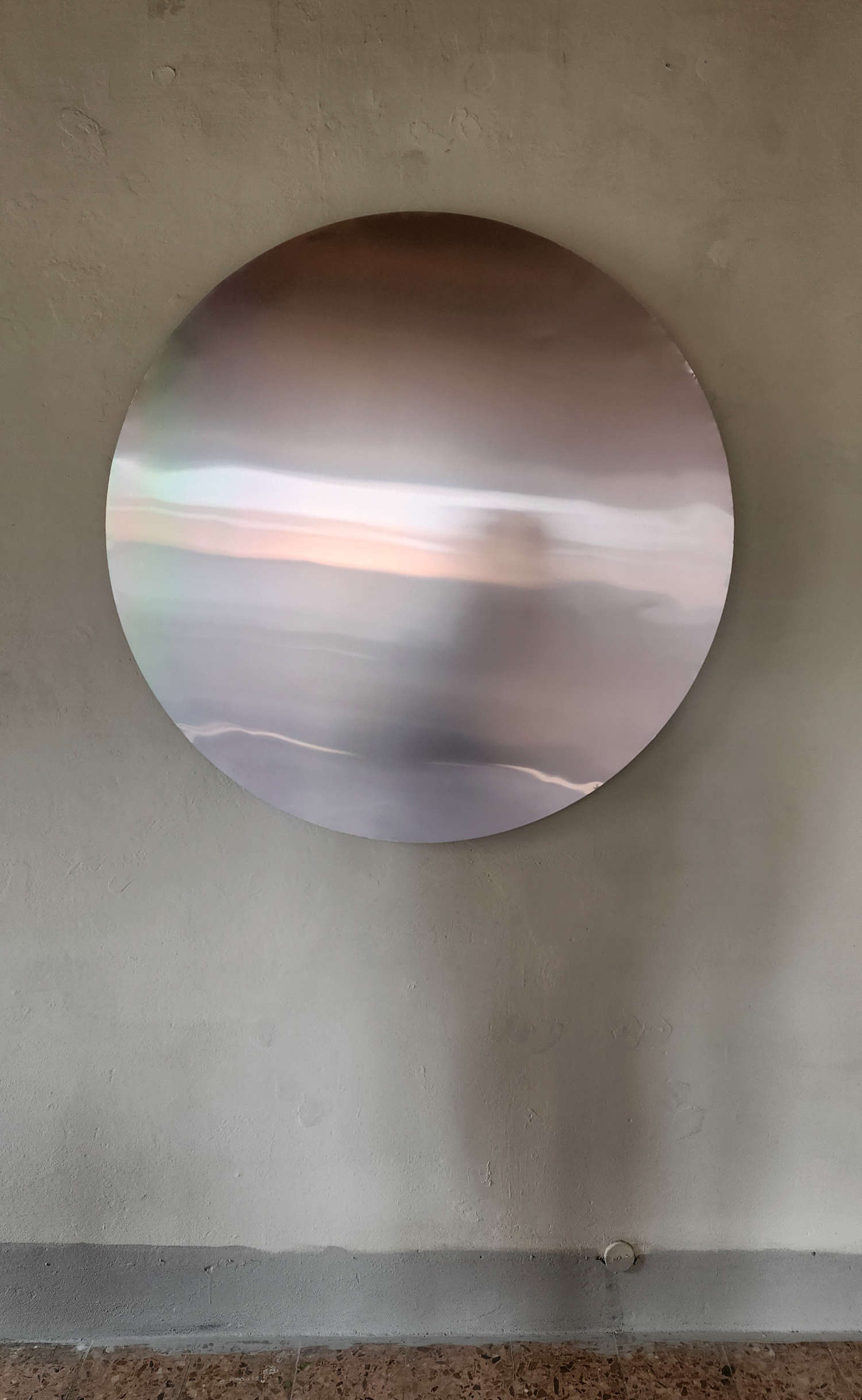
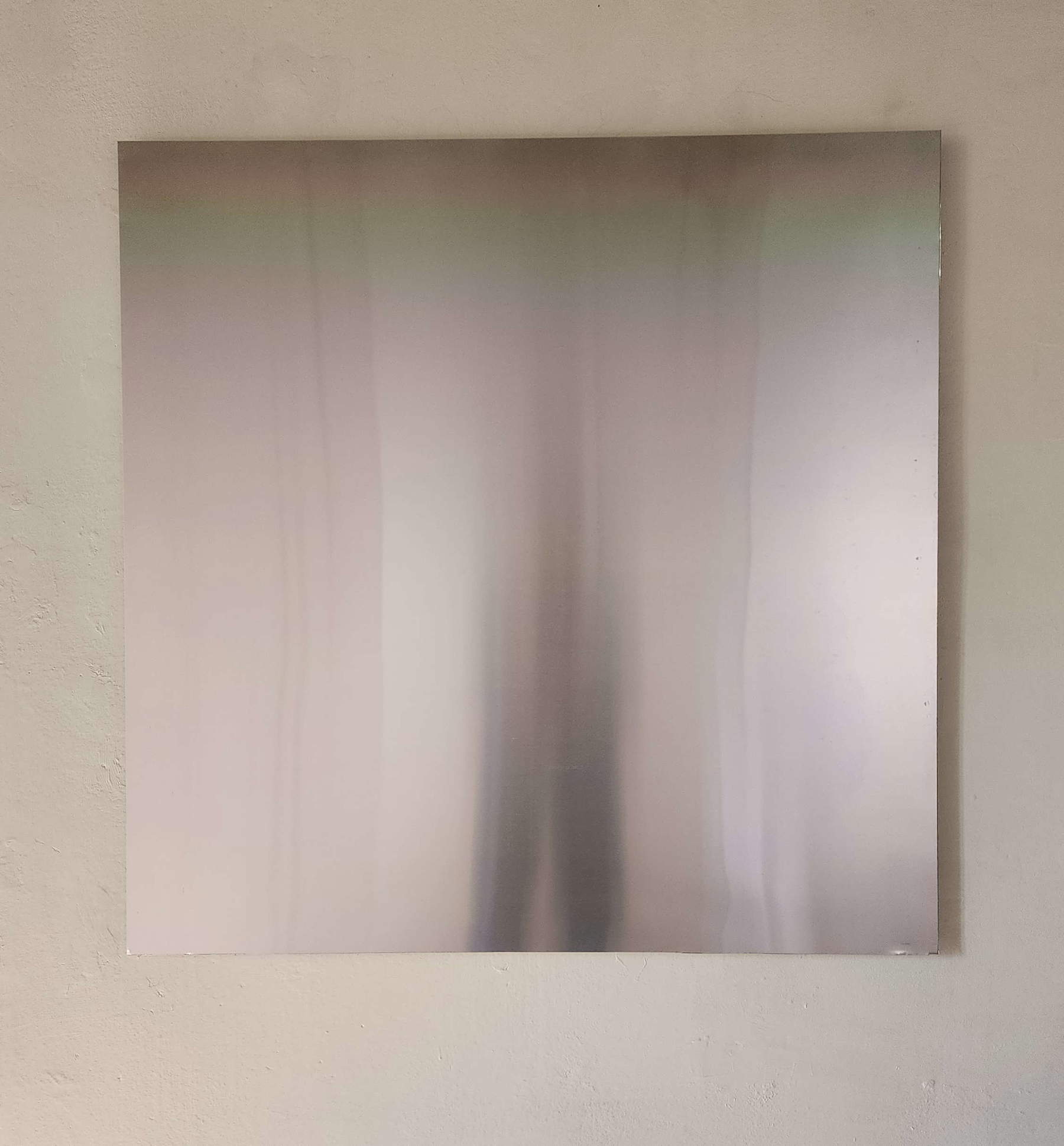
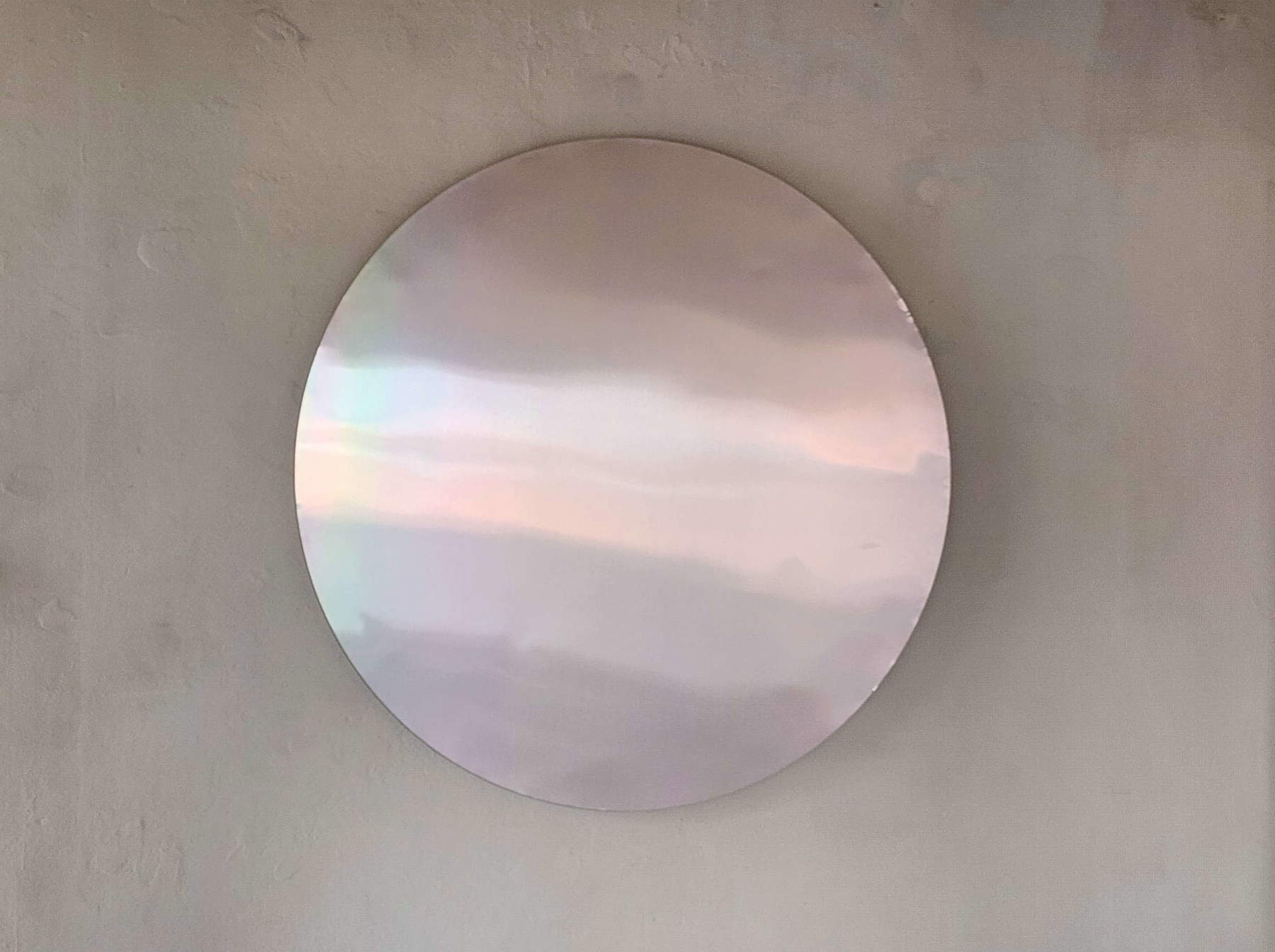
If before Faleni’s works might have seemed to be the continuation and renewal of a precise tradition of color that saw in Rothko and Jenkins its most important references, in his new works one senses, in some ways, the distant echo of Fontana’s Spatialism, especially in the meaning of the work (of the cut, in particular) as a means of returning to reality, to the everyday.work (of the cut, in particular) as a means of returning to reality, to the everyday that envelops us, and the closer echo of the painting of Claudio Olivieri, who understood art as a means to go beyond the visible, to show what cannot be perceived, to allow the relative to push itself beyond the senses. Olivieri said that “it is through painting that the invisible permeates the seen with its own promise,” yet at the same time “painting is also body, physicality, presence.” And Faleni is therefore positioned as a refined continuer of a line of Italian abstraction that has always intended to investigate these phenomena without, however, aiming at the transcendent, without aspiring to ideas of asceticism: it is a search for what exists beyond what is seen. In Faleni’s art, color, and now light, are always means that serve to connect the sensible with the suprasensible. There is perhaps a commonality: as in Olivieri’s painting, so in Faleni’s aluminum, light does not return sharp, defined images. As in Olivieri’s painting, so in Faleni’s aluminum we are illuminated by a glow of infinity that is revealed through the senses. The difference is that with Faleni the image, due to the nature of his work, is even more elusive because it is fragmented and partial, because it opens to infinite multiplication, because the impossibility of capturing a stable image opens to an infinity of variations without offering conclusions, because there is not a single work: infinite ones exist, since each moment in which one observes the work is unique, personal, unrepeatable, irreproducible. In the Leghorn artist’s work, Merleau-Ponty’s voyance resonates, the seeing that “makes present what is absent,” the “seeing more than is seen,” the access “to a being of latency,” the invisible understood as “the relief and depth of the visible.”
And for Faleni, blur is also meant to be an invitation to awareness. Blur, he says, is “possibility.” His Living Works, he says, are also provocations: “by observing the reflection, the viewer is called to question his own role in this system.” There are no definite truths, however. There is not the motionless, still, partial reality that is observed inside a mirror. There is a surface that reflects an elusive, intimate, suspended reality, a reality in which we also enter, despite the fact that we are no longer at the center: we are a kind of epiphenomenon of the real, we do not recognize ourselves. We are granted, at most, the faculty of finding ourselves, assuming we can. Maurizio Faleni’s Living Works are seeing beyond the visible.
Warning: the translation into English of the original Italian article was created using automatic tools. We undertake to review all articles, but we do not guarantee the total absence of inaccuracies in the translation due to the program. You can find the original by clicking on the ITA button. If you find any mistake,please contact us.